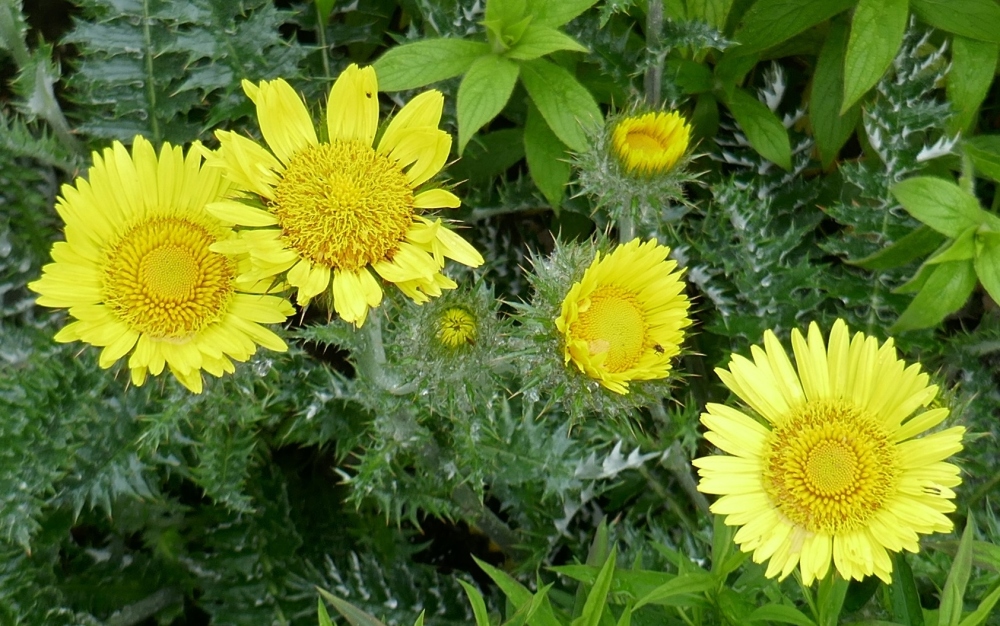One slight disadvantage of growing unusual plants can be the lack of information on them. Even with access to the internet, a search for something choice and obscure may only turn up a photograph taken by someone on a botanising holiday, with no cultural information. Only a closer look at the growing environment, and research on the local climate, will give a clue as to whether there is a chance of growing it. Then comes the problem of finding a supplier! Or you may have the opposite problem – a detailed list of requirements, ample pictures, but no name.
Three years ago, I placed an order with Cally Gardens, a small nursery run by plant explorer Michael Wickenden in Scotland. This included a berkheya he had found during a trip to Lesotho. Unable to identify it, he sold it under the name Berkheya ‘Helios’, describing it as ‘the best Berkheya in cultivation’

Helios was a god and personification of the sun in ancient Greek religion, and the large, bright yellow, daisy flowers certainly bring a burst of sunshine to the garden. The foliage is not so user friendly, being very spiny, green with a silvery-white reverse. The plant grows a couple of feet high with a larger spread as it forms new crowns. Semi-evergreen, it needs a fertile soil with good drainage in full sun.
Sadly, Michael died a few months later in 2016 while on another plant expedition in Myanmar. The nursery is now owned by another plantsman, Kevin Hughes. Mail order is no longer offered, but I hope to visit Cally Gardens later in the summer when I may finally be able to get a name for my berkheya.
I grow a similar-looking Berkheya I always called Berkheya multijuga but it does not look quite right. I got the seeds from the Hardy Plant Society seed distribution scheme, labeled only as Berkheya sp.. It does form large prickly rosettes and beautiful large yellow flowers each early summer. It seems to be thriving in my well-drained soil but does not like to be too dry in summer. I do grow two other Berkheya, B. cirsiifolia and B. purpurea, both doing quite well too.
LikeLike
Thank you for your comment. This has now been identified as a form of B. radula
LikeLike